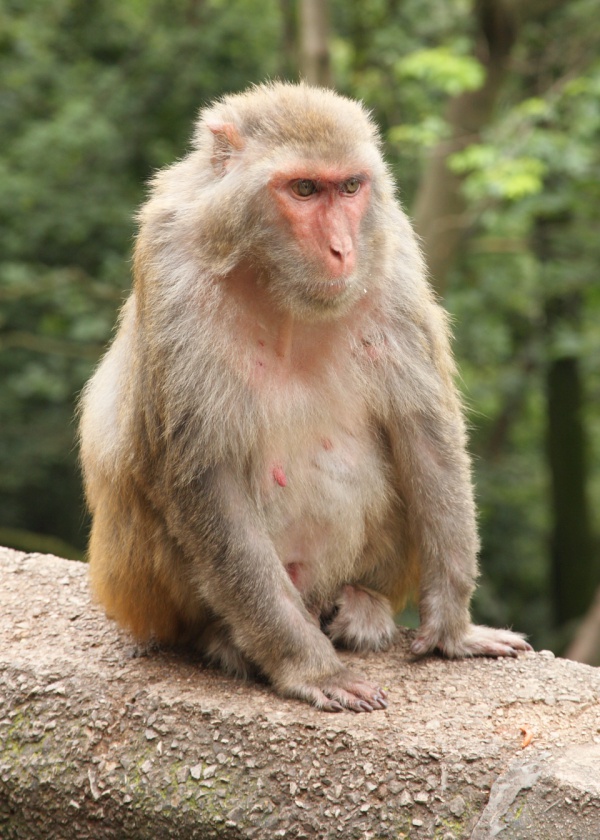Facts About Rhesus macaque
The rhesus macaque is a species of Old World monkey found across South, Central, and Southeast Asia. Classified as "Least Concern" on the IUCN Red List, this classification reflects its extensive range, large population, and adaptability to diverse environments. These monkeys inhabit a variety of regions, from grasslands and forests to areas in close proximity to human settlements.
Physically, rhesus macaques are easily identifiable. They feature pink faces and fur that varies from brown to grey. Their tails typically measure between 20.7 and 22.9 cm in length. Dietary-wise, they primarily consume plant matter but occasionally feed on insects. Active during daylight hours, they are arboreal as well as terrestrial in their movements. These monkeys are noted for their intelligence, frequently demonstrating impressive cognitive abilities in research settings.
Rhesus macaques live in social groups composed of both males and females, exhibiting clear social hierarchies based on age and gender. Communication within these groups is conducted through a combination of facial expressions, vocalizations, and gestures. During the mating season, males compete for females, and interestingly, females often show a preference for mating with unfamiliar males.
In the realm of scientific research, rhesus macaques hold significant importance. Their physiological and biological systems closely resemble those of humans, making them invaluable for medical research. They have been pivotal in the development of vaccines and the understanding of reproductive biology. These monkeys have even participated in space missions and genetic studies, with their entire genome sequenced in 2007.

 Bhutan
Bhutan